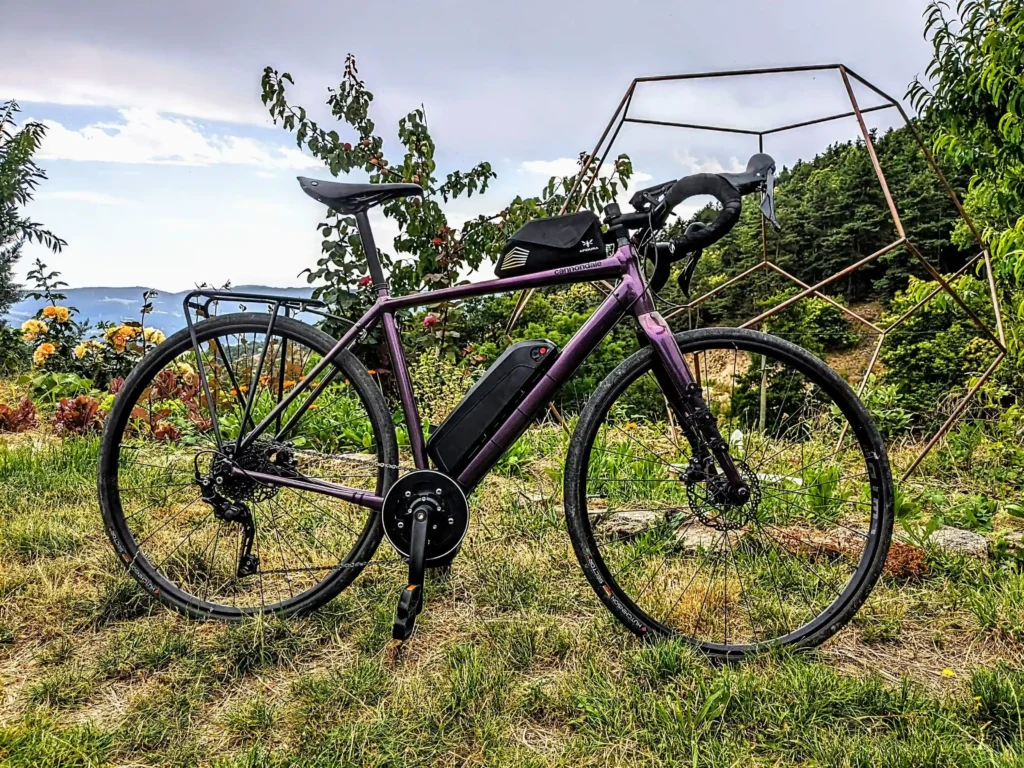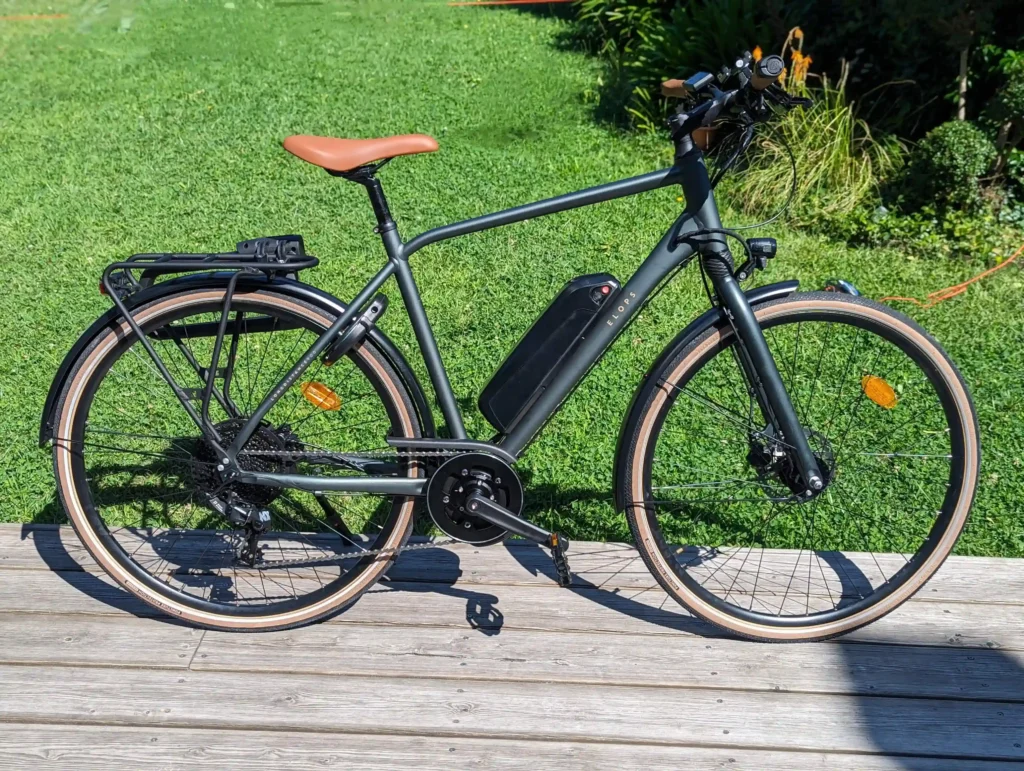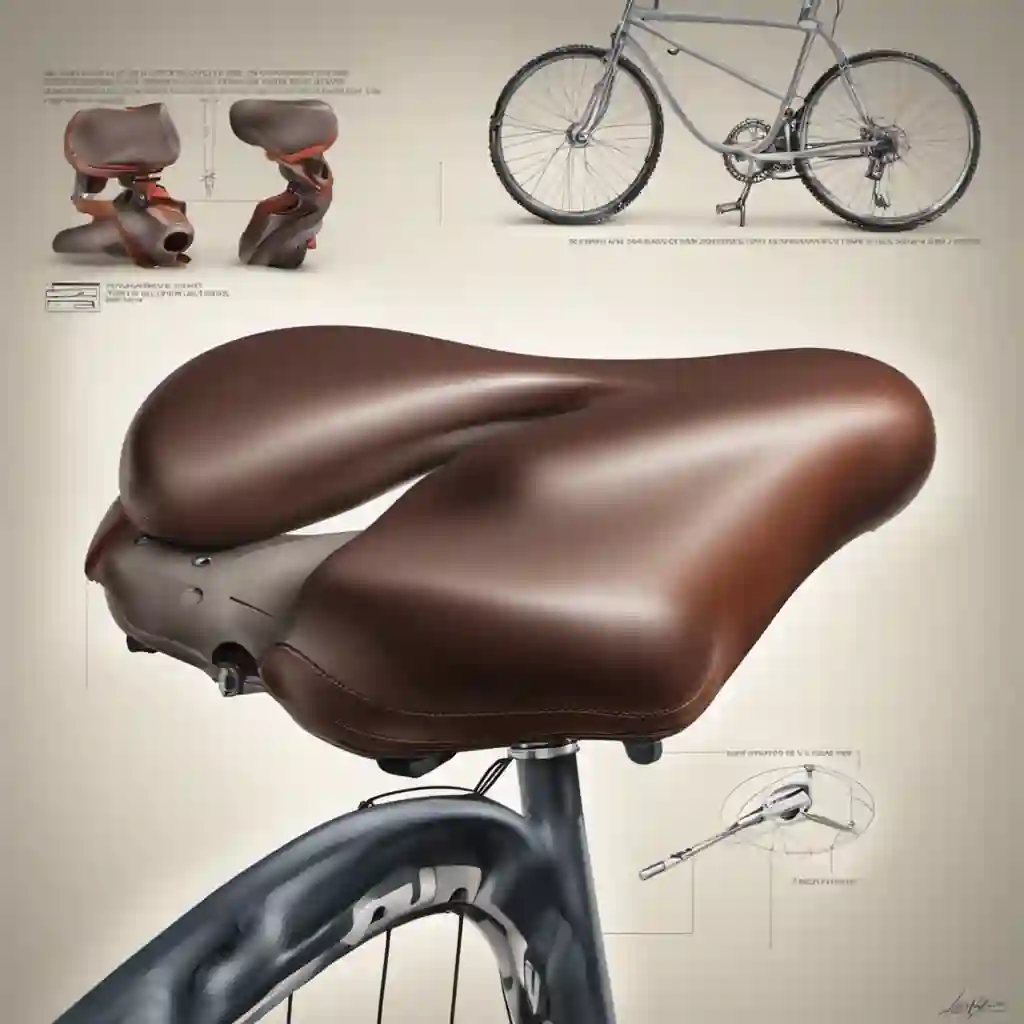When it comes to choosing brakes for your electric bike, it’s important to consider the different types of brakes available to you, as well as their advantages and disadvantages. Brakes are a key component in the safety of your electric bike. In this article, we’ll explore the different types of brakes for electric bikes, as well as the factors to consider when choosing the brakes best suited to your needs.

The different types of brakes for electric bikes
Electric bikes are becoming increasingly popular, offering a practical and environmentally-friendly alternative to traditional means of transport. However, like all bicycles, electric bikes require effective brakes to guarantee the rider’s safety. There are several types of brake for electric bikes, each with its own advantages and disadvantages. Our crankset motor kit is suitable for all the brake types we will be presenting in this article. Wheel motor kits are not always compatible.
Mechanical disc brakes
Mechanical disc brakes are one of the most common types of brake used on electric bikes. They work by applying a frictional force to a rotor attached to the wheel. Mechanical disc brakes offer excellent stopping power and are relatively affordable. However, they require regular maintenance to maintain their efficiency.
Mechanical disc brakes can accumulate dust and dirt, which can reduce their efficiency. It is therefore important to clean mechanical disc brakes regularly to ensure they work properly. In addition, mechanical disc brakes may require regular adjustment to maintain their performance, which can be a disadvantage for less experienced cyclists.
Hydraulic disc brakes
Hydraulic disc brakes are considered to be the most efficient brakes for electric bikes. They work in the same way as mechanical disc brakes, but use hydraulic oil rather than cables to apply the friction force to the rotor. Hydraulic disc brakes offer high braking power, increased heat resistance and low maintenance.
Hydraulic disc brakes are also easier to modulate than mechanical disc brakes, which means they offer better speed control. However, they can be more expensive to buy and more difficult to repair in the event of a problem.
V-brakes
Shoe brakes are another type of brake commonly used on electric bikes. They are less expensive than disc brakes, lighter and easier to maintain. Shoe brakes use rubber pads to brake the wheels.
However, they offer less braking power than disc brakes and can be less effective in wet conditions. What’s more, rubber bearings can wear out quickly, which means they need to be replaced regularly to ensure optimum performance.
Drum brakes
Drum brakes are a type of brake used on electric bikes fitted with special wheel hubs. They are very effective for loaded bikes (cargo bikes) and are considered to be the most durable brakes (very low maintenance).
However, drum brakes are heavier than other types of brake and can be costly to install or replace. In addition, drum brakes can have a less direct braking feel than disc brakes, which can be a disadvantage for more experienced cyclists.

Advantages and disadvantages of different brakes
The choice of brakes is an important decision for any cyclist. Mechanical disc brakes, hydraulic disc brakes, V-brakes and drum brakes are the four main types of brake available on the market. Each of these types has its advantages and disadvantages, and it’s important to be aware of them before making a choice. Here’s an overview of the advantages and disadvantages of each type of brake.
Mechanical disc brakes
Mechanical disc brakes are an ideal option for cyclists looking for powerful brakes at an affordable price. They use a cable to actuate the brake, which makes them easier to maintain than hydraulic disc brakes. However, they require regular maintenance to avoid loss of efficiency. Mechanical disc brakes are also easier to install than hydraulic disc brakes, which can be an advantage for cyclists who like to do their own maintenance.
But beware: mechanical disc brakes may not perform as well as hydraulic disc brakes, especially in wet or rainy conditions. They can also be noisier to use, and the cable can wear out more quickly than on other types of brake.
Hydraulic disc brakes
Hydraulic disc brakes offer the best braking power available on the market. They use hydraulic fluid to operate the brake, making them very powerful and efficient. What’s more, they are low-maintenance and highly reliable. However, they can be more expensive than other types of brake and more difficult to repair.
Hydraulic disc brakes can also be heavier than other types of brake, which can be a disadvantage for cyclists looking to reduce the weight of their bike. What’s more, they can be more difficult to install than mechanical disc brakes, which may require the help of a professional.
V-brakes
Shoe brakes, also known as V-brakes, are the most common type of brake used on bicycles. They are cheaper and lighter than disc brakes, but offer comparatively less braking power. They are, however, easy to maintain and ideal for cyclists looking for a basic, solid type of brake.
Shoe brakes can be less effective than other types of brake, especially in wet or humid conditions. These brakes are suitable for electrified bikes, but will require more maintenance than disc brakes, which can be a disadvantage for cyclists with little experience of bike mechanics.
Drum brakes
Drum brakes are very efficient for heavy loads and are considered, along with hydraulic disc brakes, to be the most durable. They are also very easy to maintain and require little upkeep. However, their installation or replacement can be more costly than other types of brake.
Drum brakes can be heavier than other types of brake, which can be a disadvantage for cyclists looking to reduce the weight of their bike. What’s more, they can be more difficult to install than pad brakes, which may require the help of a professional.
Ultimately, the choice of brakes will depend on the individual needs and preferences of each rider. It’s important to consider the advantages and disadvantages of each type of brake before making an informed choice.
Brakes in France
In France, legislation requires bicycles to be fitted with an effective braking system, capable of stopping the bike over a distance of 5 meters at a speed of 20 km/h. Shoe brakes, mechanical disc brakes and hydraulic disc brakes are all authorized in France, but (old) drum brakes may not comply with French legislation.
Cyclists in France tend to prefer hydraulic disc brakes for their superior stopping power and reliability. However, pad brakes remain popular because of their simplicity and ease of maintenance. Mechanical disc brakes are also popular with cyclists looking for a more affordable option.
It’s important to note that cyclists in France are obliged to respect road safety rules, including those concerning brakes. Cyclists must be able to stop quickly and safely, whatever type of brakes they use.

How to choose the right brake for your electric bike
Choosing the right brake for your electric bike may seem like a daunting task, but it can make a big difference in terms of safety and performance. It’s important to consider several factors before making a decision. Bear in mind that the quality of the material is very important, and that a good-quality V-brake is better than a poor-quality disc brake.
Bike weight and size
The weight and size of your electric bike should be taken into account when choosing brakes. Hydraulic disc brakes are more suitable for heavier electric bikes. However, if your bike is lighter, pad brakes may be all you need.
It’s important to remember that pad brakes have a braking capacity limit, which means they may not be as effective for heavier bikes. If you have an electric bike with heavy loads (children, shopping, etc.), we recommend hydraulic disc brakes for better performance.
Terrain and weather conditions
The terrain you’ll be riding on, as well as the weather, are factors to be taken into account when choosing brakes. If you plan to ride on mountainous roads or in wet weather, hydraulic disc brakes or drum brakes will be more effective.
Hydraulic disc brakes are particularly effective on mountainous roads because of their ability to dissipate heat faster than pad brakes. Drum brakes are also a good option for wet conditions, as they are protected from water and mud, making them more reliable and durable.
Frequency and intensity of use
If you plan to use your electric bike frequently, hydraulic disc brakes could be a wise choice because of their low maintenance requirements. If you use your electric bike less regularly (or if you’re comfortable with bike mechanics), pad brakes may be all you need.
Hydraulic disc brakes require less maintenance than pad brakes, making them more practical for regular use. However, if you don’t use your electric bike on a daily basis (conversely, if you regularly maintain it yourself), pad brakes may be a more economical and practical option.
Budget and maintenance costs
Finally, budget and maintenance costs are key factors to consider. Shoe brakes are the least expensive brakes, while hydraulic disc brakes are the most expensive. However, hydraulic disc brakes require little maintenance, whereas shoe brakes need regular servicing to maintain their efficiency.
It’s important to take these factors into account before deciding on brakes for your electric bike. Ultimately, the choice of brakes will depend on your budget, your needs and your personal preferences. Whatever you choose, make sure you consider the safety and performance of your electric bike.
Brake selection, an important decision for your safety
The choice of brakes for your electric bike is an important decision that can make a big difference in terms of safety and performance. It’s important to take into account factors such as the weight and size of your bike, the type of terrain and weather conditions, the frequency and intensity of use, as well as budget and maintenance costs.
However, it’s also important to remember that the choice of brakes is a personal decision that depends on your own needs and preferences. Whatever your choice, be sure to consider the safety and performance of your electric bike for a safe and enjoyable riding experience.
Conclusion
The choice of brakes for your electric bike is an important safety factor. By taking into account various factors such as the weight and size of your bike, the type of terrain you intend to ride on, the frequency and intensity of use, as well as budget and maintenance costs, you can make the right choice to ensure a safe and enjoyable riding experience. Choose the brakes that suit you best before electrifying your bike with our kit for example😉 .





